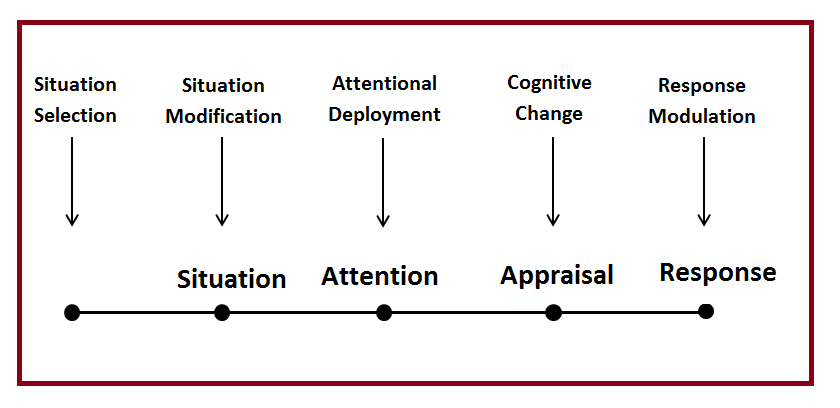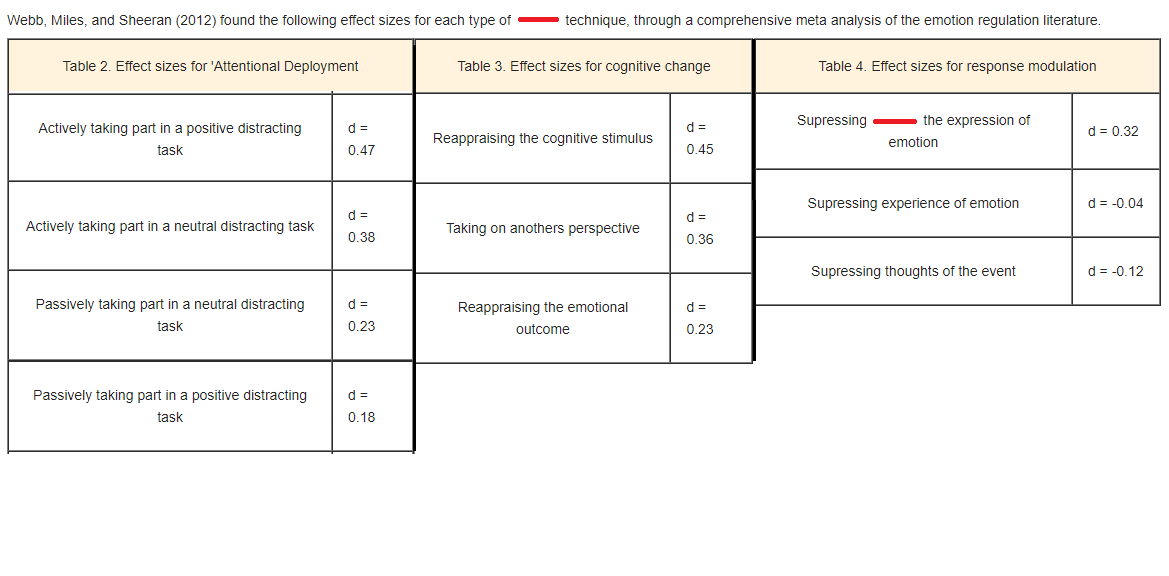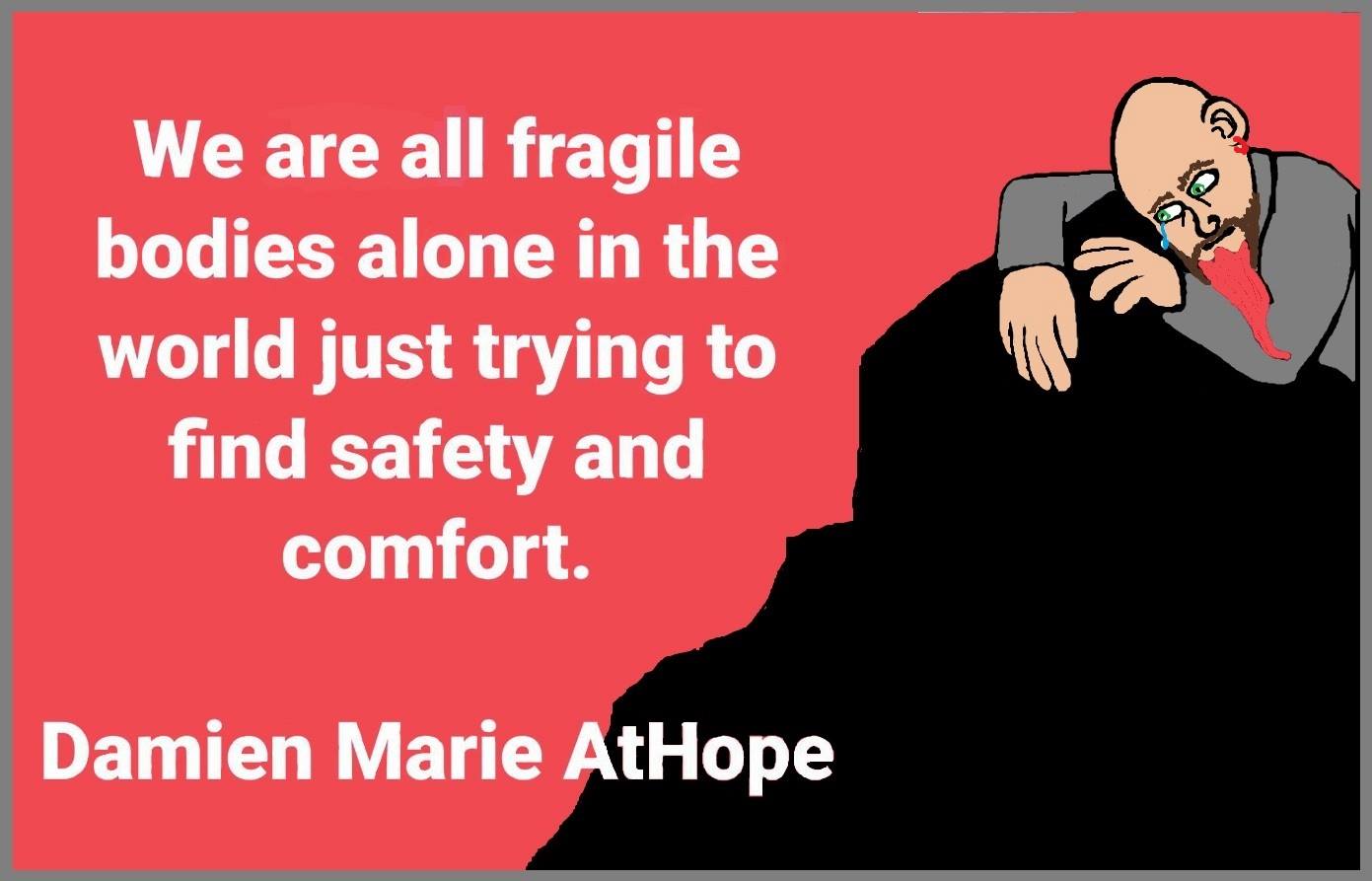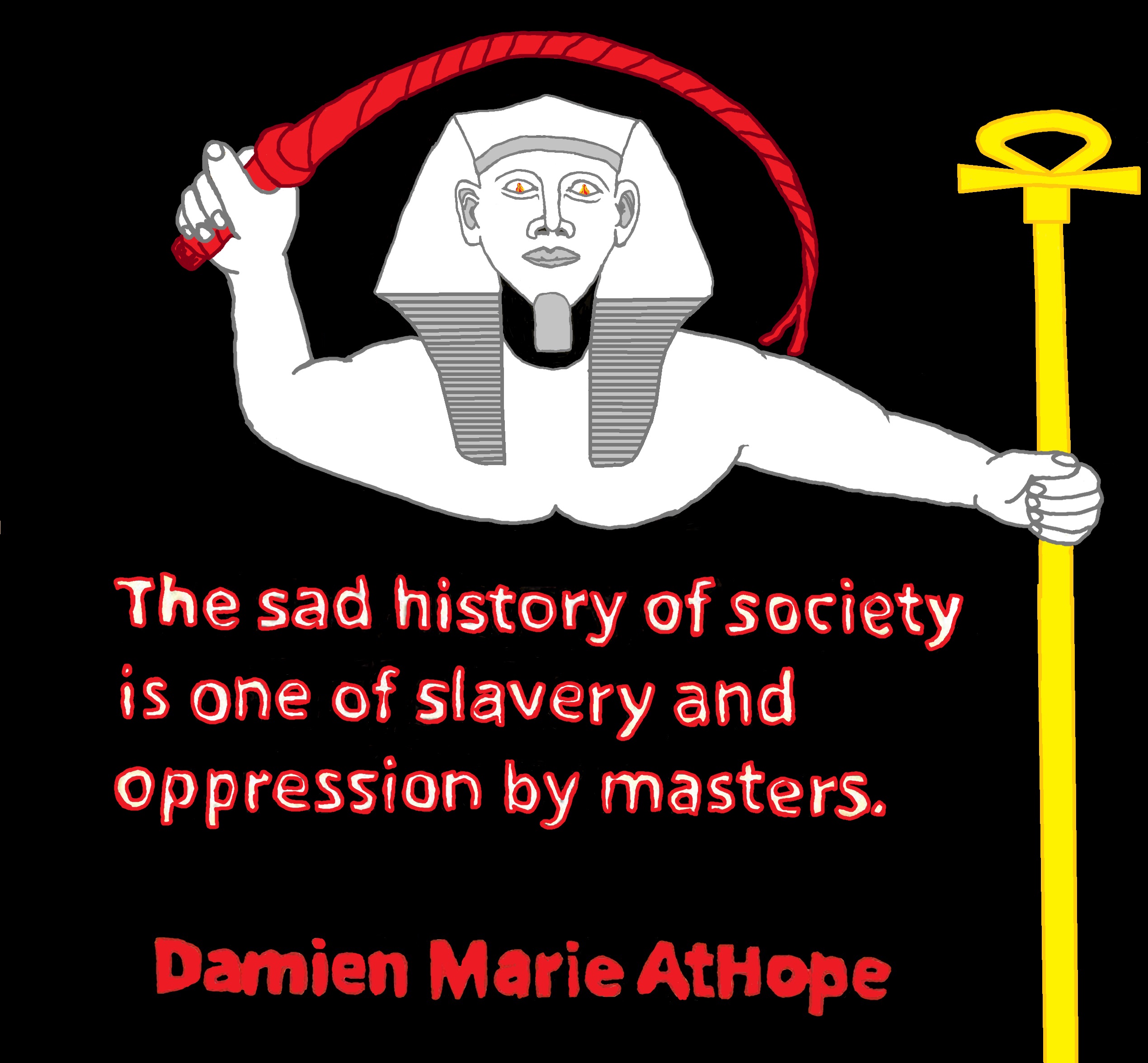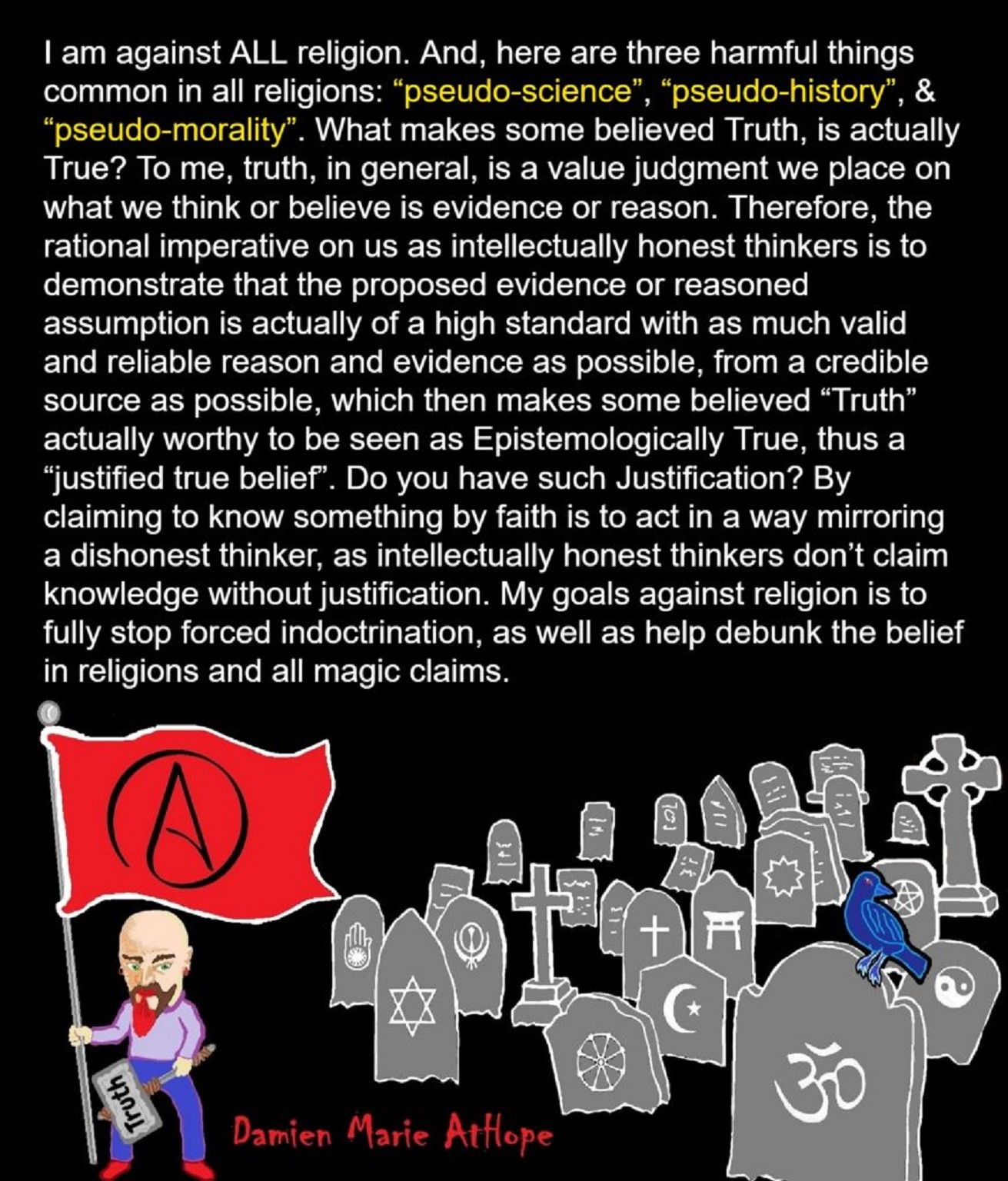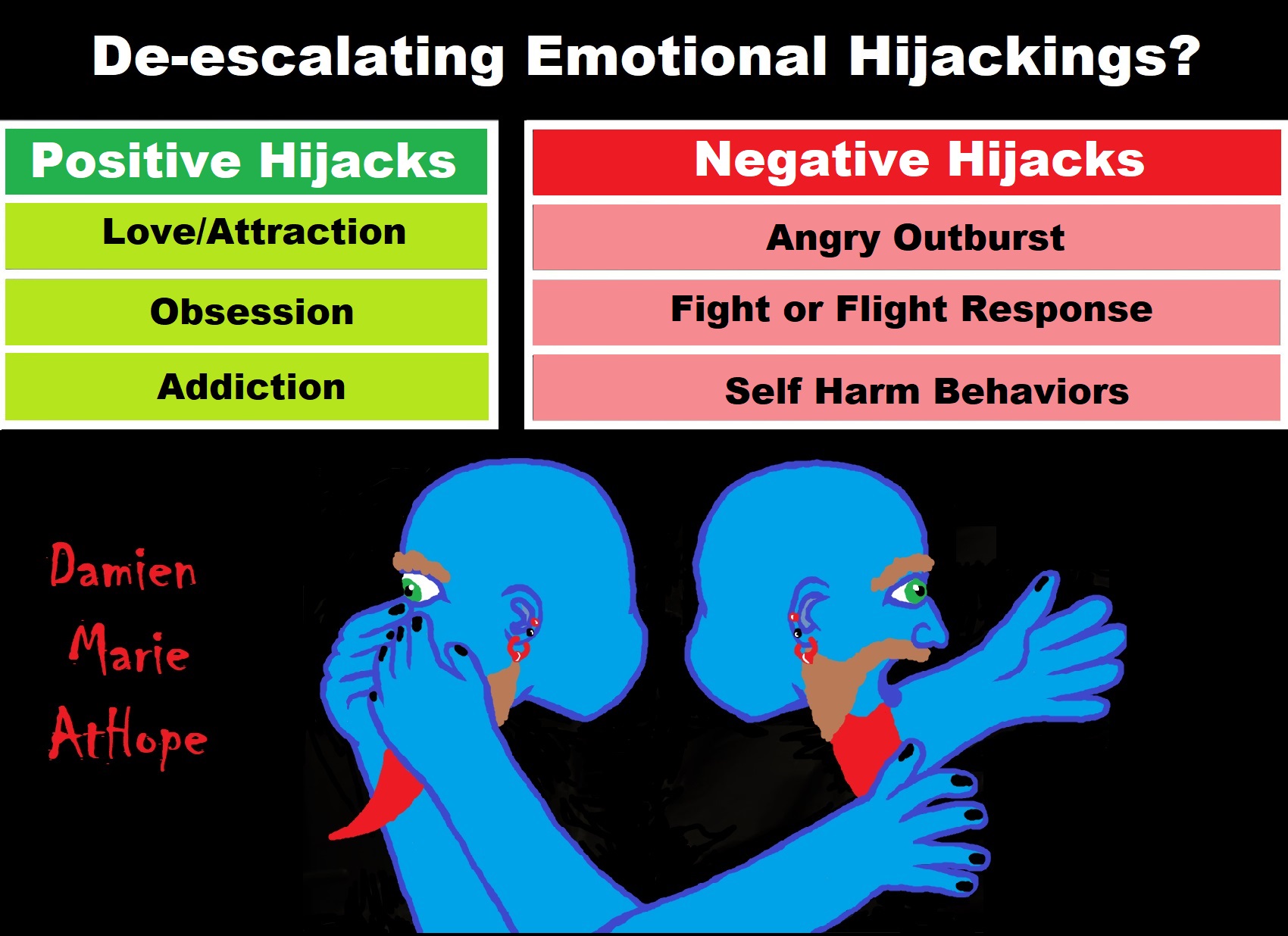
“In light of the machinery of survival-based, emotional reactivity, let’s look more narrowly at what Daniel Goleman has called “emotional hijacking.” The emotional circuits of your brain – which are relatively primitive from an evolutionary standpoint, originally developed when dinosaurs ruled the earth – exert great influence over the more modern layers of the brain in the cerebral cortex. They do this in large part by continually “packaging” incoming sensory information in two hugely influential ways:
- Labeling it with a subjective feeling tone: pleasant, unpleasant, or neutral. This is primarily accomplished by the amygdala, in close concert with the hippocampus; this circuit is probably the specific structure of the brain responsible for the feelingaggregate in Buddhism (and one of the Four Foundations of Mindfulness).
- Ordering a fundamental behavioral response: approach, avoid, or ignore. The amygdala-hippocampus duo keep answering the two questions an organism – you and I – continually faces in its environment: Is it OK or not? And what should I do?
Meanwhile, the frontal lobes have also been receiving and processing sensory information. But much of it went through the amygdala first, especially if it was emotionally charged, including linked to past memories of threat or pain or trauma. Studies have shown that differences in amygdala activation probably account for much of the variation, among people, in emotional temperaments and reactions to negative information. The amygdala sends its interpretations of stimuli – with its own “spin” added – throughout the brain, including to the frontal lobes. In particular, it sends its signals directly to the brain stem without processing by the frontal lobes – to trigger autonomic (fight or flight) and behavioral responses. And those patterns of activation in turn ripple back up to the frontal lobes, also affecting its interpretations of events and its plans for what to do. It’s like there is a poorly controlled, emotionally reactive, not very bright, paranoid, and trigger-happy lieutenant in the control room of a missile silo watching radar screens and judging what he sees. Headquarters is a hundred miles away, also seeing the same screens — but (A) it gets its information after the lieutenant does, (B) the lieutenant’s judgments affect what shows upon the screens at headquarters, and (C) his instructions to “launch” get to the missiles seconds before headquarters can signal “stand down!” r
Emotional Hijacking: What happens to your brain when you lose control?
“There are times when either fear or anger, turn us completely blind and make us act in a way that otherwise we would never do. At such times, we can use harsh words that hurt others and we commit reprehensible acts. We react in an exaggerated manner, without thinking, we lose control of the situation and ourselves. At that time occurs an emotional hijacking. All of us, sooner or later, we have been victims of these emotional hijackings. There are times when we stop thinking, we’re carried away by feelings and, after that critical moment, we do not remember very well what we did or why. When we are victims of an emotional outburst, the center of the limbic system declares a “state of emergency” and recruits all the resources of the brain to perform its functions. That seizure occurs within a few seconds and creates an immediate reaction in the prefrontal cortex, the area associated with reflection, and we have no time to evaluate what is happening and decide rationally. Obviously, all emotional hijackings have negative connotations. For example, when we are victims of an attack of uncontrollable laughter or feel euphoric, the amygdala also takes control and prevents us from thinking. In fact, is not the first time (and won’t be the last) that someone makes a stupid thing, moved by a state of euphoria, promising things that will not satisfy. The amygdala: Headquarter of passions and brain sentinel. The emotional hijacking is generated in the amygdala, which is one of the most important structures of the limbic system, where emotions are processed. In fact, the amygdala is specialized in the processing of emotional stimuli factors, and is linked to the process of learning and memory. It has been seen that when occurs a disconnection between the amygdala and the rest of the brain, we are not able to give an emotional meaning to the situation. For example, we can see our partner but do not experience any emotion. Thus, the amygdala is a kind of reservoir of emotional memory. However, the amygdala plays a fundamental role in passions. When this structure is damaged, people have no feelings of anger and fear. They are not even able to mourn. At this point you might wonder: if the amygdala works perfectly, how can we get carried away by passion so easily? The problem is that the amygdala also plays the role of sentinel of our brain and one of its functions is to examine the perceptions in search of a threat. The amygdala reviews each situation wondering if: Is it something I hate? Can it hurt me? Would I fear it? If the answer to any of these questions is yes, the amygdala reacts immediately activating all the resources and sends an emergency message to the rest of the brain. These messages are triggering the secretion of a number of hormones that prepare us to flee or fight. At this time the muscles tighten, the senses are sharpened and we turn on alert. The memory system is also activated to try to recover any information that may be useful to get out of that risk. Thus, when we face potential danger, the amygdala takes over and runs almost the entire mind, even the rational part. Of course, in our brain everything is ready to give free rein to the amygdala because when we are in danger, nothing else matters. Therefore, the amygdala is the first cerebral station through which run the signals coming from our senses, only after being assessed they pass to the prefrontal cortex. That is why, sometimes emotions go beyond us taking the control. Failure to activate the rational mind. Because an emotional hijacking occurs, it is not sufficient that the amygdala be activated, it is also necessary a failure in the activation of the neocortical processes that are responsible for balancing our emotional responses. In fact, it is usual that when the rational mind is overloaded with the emotional mind, the prefrontal cortex is activated to help manage emotions and to evaluate possible solutions. The right prefrontal lobe is the seat of negative feelings such as fear and aggression, while the left prefrontal lobe keeps them at bay, serving as a kind of neural thermostat that allows us regulating the unpleasant emotions. During an emotional hijacking, the left prefrontal lobe is simply turned off letting the emotions flow. One of the main problems of this neural alarm system is that in the world in which we now live, where there aren’t serious dangers threatening our lives, it is almost never necessary for the amygdala to hijack the rest of the brain. Especially when you consider that, when the amygdala is activated, it performs very crude associations with small pieces of past experiences. So that, if a person has developed a deep fear of the sound of firecrackers any similar sound can trigger an emotional hijacking. In fact, the low accuracy of our emotional brain becomes even stronger when you consider that many of our memories are from our childhood, when structures such as the amygdala and hippocampus had not yet fully matured and could store information with excessive emotional charge. At this point, we should not be surprised if some of our most intense emotional reactions are incomprehensible to us, as these could come from some event of our childhood in which the world still was too chaotic and when we even hadn’t acquired the language yet. At that point, any experience may have been recorded in an immature amygdala as a trauma, which can later be activated in similar situations. Is it possible to avoid emotional hijacking? There are some situations where it is virtually impossible to avoid an emotional hijacking. However, that does not mean we should resign to be passive victims of our emotions. On the contrary, we can train our brain to learn to discriminate between signals that actually represent a danger and others which are harmless. How to do it? First, being aware that most situations of everyday life can be stressful or frightening but do not represent a real danger. Therefore, there’s no need to be tense or angry. Moreover, it is necessary to practice detachment, in the sense that, the more possessions we consider as part of our “ego”, the more we will have the tendency to overreact when they are endangered.” Ref
The Role of Emotions in Critical Thinking
“Have you ever jumped to a decision just to get it over with…. to relieve the frustration or tension you were feeling? For most of us, the unfortunate answer is yes. Feelings certainly impact our thinking and our actions. I facilitate critical thinking training sessions, and invariably this question comes up: “What role do emotions play in critical thinking?” This question keeps popping up because many people have a stereotyped view of critical thinking as a completely logical process. They conjure up an image of Mr. Spock engaged in a detached analysis, completely devoid of emotion. Some models of critical thinking reinforce this stereotype by focusing exclusively on impersonal analysis of information and logical evidenced based decision making. In reality, those models are limited because people are just not wired that way. Thinking and Feelings are intertwined, and in the best critical thinking scenario, one helps the other. So, to engage in good critical thinking it is important to know how to recognize and harness your Feelings because they impact your Thinking. Here is how it works. Feelings serve as cues, helping you pay attention to certain information or increasing your focus in certain areas. Historically, this response has been very adaptive. For example, when our ancestors were faced with danger, they experienced fear and reacted quickly by heading for safety. A fast emotional response was ideal. Although times have certainly changed, we are still wired the same way, with quick trigger emotional responses. These emotional reactions help you recognize that something is up, but the cues are often vague and sometimes misguided. This is where Thinking comes into play. Let’s go back to the example of jumping to a decision. Picture yourself experiencing an uneasy tension that comes when you perceive pressure to make a decision, maybe because people are waiting on your response. You don’t want to be the bottleneck; you don’t want to let anyone down. So, you rush through the information and reach a conclusion. Presto, the pressure is gone, but what about the quality of the process? Let’s rewind and insert critical thinking into the process. Those uncomfortable feelings are cues, which could be read as a need for urgency or an opportunity to shift over to your Thinking mode. Specifically, you could Stop and Think: What am I trying to accomplish? Is the situation urgent? Why am I feeling pressured? In the Stop and Think step you are testing the validity of your feelings. Maybe the situation is urgent and you do need to move quickly. Maybe it is not urgent and you can develop a strategy that matches the reality of the situation. Once you set up your strategy you are in a better position to move through the remaining critical thinking steps with a more attentive and balance approach. You are less likely to rush the process. Feelings can impact how we view a situation, what we see (or don’t see) and how we interpret information. At each point, inserting thinking skills into the process will help you evaluate the accuracy of those feelings. You will become adept at knowing when Feelings are leading you astray and when they are signaling an important cue worth noting. How have you used the power of emotions to make your critical thinking better? Learn more about the RED Model of Critical Thinking here.” Ref
Are You Vulnerable to an Emotional Hijacking
Emotional hijacking: Why do we lose control, and how can we gain it back
Bottom up inhibition of rational thought
The amygdala was the primary emotional hijacking culprit outlined by Goleman (1995). The amygdala receives connections directly from the thalamus; which functions as the sensory switchboard of the brain. Although this route is primitive, it is incredibly fast; ensuring quick instinctive responses in survival situations. A secondary route comes through the sensory cortex. This route is more realistic, yet slower (Phelps & LeDoux, 2005). The amygdala interprets these basic building blocks of sensory experience, and initiates a series of changes in the brain if they are deemed threatening. The amygdala can release hormones and neurotransmitters to ‘switch off’ or dampen activity in certain brain regions (LeDoux, 2007; Garcia, Voimba, Baudry, and Thompson, 1999). Monoamine oxidase is a chemical in the brain that breaks down serotonin, dopamine and noradrenaline. People with a certain variant of a gene that encodes this chemical, known as MAOA-L, demonstrate an increased amygdala response, and less control over emotional urges (Hunter, 2010). Interestingly, these individuals are only more aggressive when provoked (McDermott, Tingly, Cowden, Frazzetto, & Johnson, 2009). Another gene that encodes MAO-A; MAOA-uVNTR, has been found to play a role in panic attacks and agoraphobia (Reif et al., 2013). The reward pathway is evident in various types of addiction, which can lead people to act antisocially and take risks without forethought. Addiction is thought to be controlled by the striatum region of the brain, which contains the tegmental area (where dopamine is manufactured), and the nucleus accumbens; a brain region involved in reward and reinforcement (Wise, 2002). Everitt and Robbins (2005) stated that drug addiction was due to the striatum gaining more control over behavior than the frontal lobes. The insular cortex plays a variety of roles; however, its main role is the integration of bodily states into a sense of a whole self, a process known as Interoception (Craig, 2009). The insular cortex plays a large role in emotional hijackings, given that it is responsible for the bodily experience of emotion. The insula has been found to play a major role in drug cravings (Naqvi & Bechara, 2009) and in panic disorder (Gorka, Nelson, Phan, & Shankman, 2014). Top down inhibition is the ability of higher cortical areas in the frontal lobe to inhibit the impulsive, emotionally charged signals sent by the lower ‘reptilian brain’. Top down inhibition is imperative to long-term goal-directed activity and proper socialization. Etkin, Egner, Peraza, Kandel, and Hirsh (2006) investigated the effect of the anterior cingulate cortex on amygdala activity. They used a stroop test which presented either happy or fearful faces with the words ‘happy’ or ‘fear’ over the top. Subjects had to determine whether the pictures and words were congruent or incongruent. They found that activation of the rostral anterior cingulate cortex during the conflict-inducing stroop test was associated with decreased activation in the amygdala, suggesting that this activation resolved the conflict created by the amygdala. The Orbito Frontal Cortex (OFC) is largely responsible for the learned value of environmental stimuli. Crews and Boettiger (2009) summarised a number of research studies which found that addiction was related to low orbitofrontal activity. Case study of Phineas Gage: Phineas Gage was a railway construction worker in the 1850s. One day, while pushing explosives into a small hole to clear rock, Phineas became distracted and inadvertently ignited the powder, sending a 3.2 cm thick, 1.1 metre long iron rod through his left frontal lobe. The enormous changes in personality that occurred in Phineas as a result of this have been widely documented. His doctor, John Harlow had this too say:
| “ |
“He is fitful, irreverent, indulging at times in the grossest profanity (which was not previously his custom), manifesting but little deference for his fellows, impatient of restraint or advice when it conflicts with his desires. … A child in his intellectual capacity and manifestations, he has the animal passions of a strong man. Previous to his injury, though untrained in the schools, he possessed a well-balanced mind, and was looked upon by those who knew him as a shrewd, smart business man, very energetic and persistent in executing all his plans of operation” ” |
” |
| —(Harlow, 1993, p 277) | ||
Harlows‘ description of Phineas shows how necessary the frontal lobe is to emotional control. Without it, the subcortical structures have nothing to hijack. They are all that is left to control behaviour. So we know how and why emotional hijacking is caused. What can be done about it? Emotional intelligence theory follows the same motivation as positive psychology; to increase strengths instead of decreasing psychopathology. It was first outlined by Mayer and Salovey (1990) Emotional intelligence was defined as:
| “ |
“The ability to monitor one’s own and others’ feelings and emotions, to discriminate among them and to use this information to guide one’s thinking and actions |
” |
| —(Mayer & Salovey, 1990, p 189) | ||
Mayer and Salovey brought together scattered research and conceptualised it into 3 categories of emotional intelligence. The first is the ability to appraise and express emotion, both verbally and non verbally (interested in testing how good you are at this ability? Take this test!). The second is how well an individual can regulate this emotion, in themselves in others. The final category is how well one can use emotions to solve problems. Emotions can help solve problems through encouraging flexible planning, creative thinking, and a redirection of attention. So what has this got to do with emotional hijacking? Emotional intelligence, which can be thought of as the opposing process to emotional hijacking, has a genetic heritability of .41 (Vernon, Petrides, Bratko, & Schermer, 2008). It is up to the individual, and the society to influence the other 59%, and many programs have been designed to do this. Emotional intelligence programs are an effective way to reduce emotional hijackings on a large scale. There are numerous researchers and foundations implementing emotional intelligence interventions, with moderate levels of success. They are useful and have been proven to benefit their participants. Slaski and Cartwright (2003) implemented an emotional intelligence treatment in a sample of general managers, and found it decreased their distress by 10.5%. Brackett & Katulaks (2006) interventions in a number of US schools improved a number of outcomes, most notably a decrease in problem behaviour by students. Ref
Gross’ process model of emotional regulation
The process model of emotional regulation attempts to describe how different emotion regulating strategies can occur at different points in the emotion generation process. According to the modal model of emotion, the situation leads to attention, which leads to a cognitive appraisal, which then leads to a response (Gross & Thompson, 2007). In Gross’s process model, there are 5 different strategies that can be used to manage emotion different stages of the modal model. They can be divided into two main categories (Gross, 2002):
- Antecendent focused: Preventing the emotion from occurring
- Response focused: Dealing with the emotion after it has occurred.
The following descriptions are derived from Gross’s (2002) article.
Situation selection
Situation selection is actively choosing situations to avoid a certain emotion. For example, choosing to staying at home instead of going out to avoid a panic attack.
Situation modification
Situation modification is the act of changing the event as it is occurring. An example of situation modification is removing all triggers from your surroundings to prevent a relapse into addiction.
Attentional deployment
Attentional deployment is the act of distracting oneself from the event by thinking of something else. An example of attentional deployment is counting to ten while in the midst of an anger outburst. Attentional deployment studies generally follow the following protocol:
- In active tasks, subjects are instructed to distract themselves from the emotion by thinking of something unrelated
- In passive tasks, subjects are given a distracting activity and given no instructions or indication that it was to distract from the emotion. Positive means that the distraction is meant to induce positive effect, and neutral means that it is not meant to induce an emotion.
Cognitive change
Cognitive change is the act of reappraising a situation in a more positive light. An example of cognitive change is an wife attributing her abusive spouses behaviour to external factors; her rational thinking hijacked by her love.
Response modulation
Response modulation is suppressing emotion after it has already been generated by ignoring it and not expressing it. An example of response modulation is taking benzodiazepine drugs to avoid severe social phobia at a party.
Which emotional regulation strategy is the most effective?
Webb, Miles, and Sheeran (2012) found the following effect sizes for each type of technique, through a comprehensive meta analysis of the emotion regulation literature. Ref
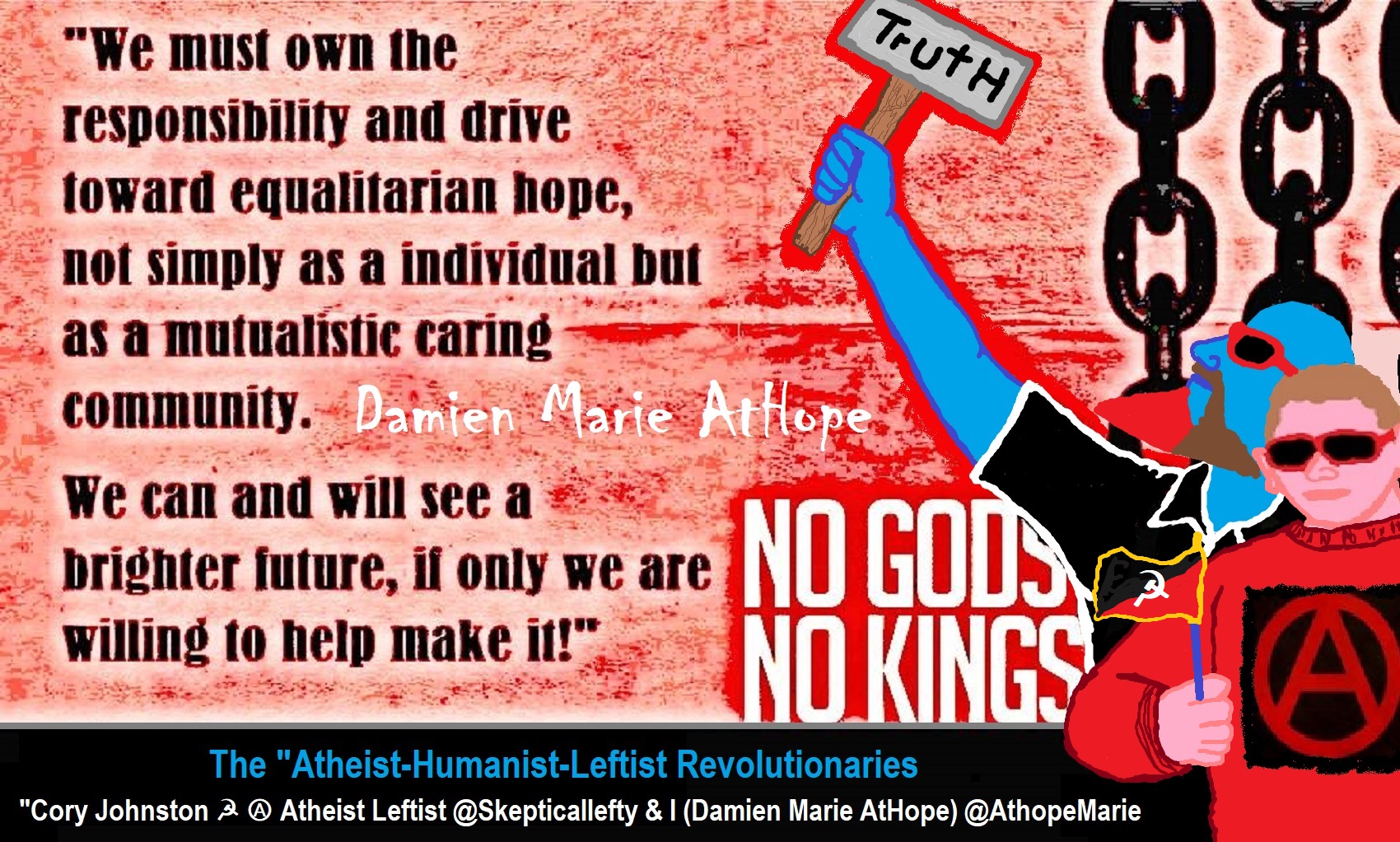
While hallucinogens are associated with shamanism, it is alcohol that is associated with paganism.
The Atheist-Humanist-Leftist Revolutionaries Shows in the prehistory series:
Show two: Pre-animism 300,000 years old and animism 100,000 years old: related to “Anarchism and Socialism”
Show tree: Totemism 50,000 years old: related to “Anarchism and Socialism”
Show four: Shamanism 30,000 years old: related to “Anarchism and Socialism”
Show five: Paganism 12,000 years old: related to “Anarchism and Socialism”
Show six: Emergence of hierarchy, sexism, slavery, and the new male god dominance: Paganism 7,000-5,000 years old: related to “Anarchism and Socialism” (Capitalism) (World War 0) Elite and their slaves!
Prehistory: related to “Anarchism and Socialism” the division of labor, power, rights, and recourses: VIDEO
Pre-animism 300,000 years old and animism 100,000 years old: related to “Anarchism and Socialism”: VIDEO
Totemism 50,000 years old: related to “Anarchism and Socialism”: VIDEO
Shamanism 30,000 years old: related to “Anarchism and Socialism”: VIDEO
Paganism 12,000 years old: related to “Anarchism and Socialism” (Pre-Capitalism): VIDEO
Paganism 7,000-5,000 years old: related to “Anarchism and Socialism” (Capitalism) (World War 0) Elite and their slaves: VIEDO
Paganism 5,000 years old: progressed organized religion and the state: related to “Anarchism and Socialism” (Kings and the Rise of the State): VIEDO
Paganism 4,000 years old: related to “Anarchism and Socialism” (First Moralistic gods, then the Origin time of Monotheism): VIEDO
I do not hate simply because I challenge and expose myths or lies any more than others being thought of as loving simply because of the protection and hiding from challenge their favored myths or lies.
The truth is best championed in the sunlight of challenge.
An archaeologist once said to me “Damien religion and culture are very different”
My response, So are you saying that was always that way, such as would you say Native Americans’ cultures are separate from their religions? And do you think it always was the way you believe?
I had said that religion was a cultural product. That is still how I see it and there are other archaeologists that think close to me as well. Gods too are the myths of cultures that did not understand science or the world around them, seeing magic/supernatural everywhere.
I personally think there is a goddess and not enough evidence to support a male god at Çatalhöyük but if there was both a male and female god and goddess then I know the kind of gods they were like Proto-Indo-European mythology.
This series idea was addressed in, Anarchist Teaching as Free Public Education or Free Education in the Public: VIDEO
Our 12 video series: Organized Oppression: Mesopotamian State Force and the Politics of power (9,000-4,000 years ago), is adapted from: The Complete and Concise History of the Sumerians and Early Bronze Age Mesopotamia (7000-2000 BC): https://www.youtube.com/watch?v=szFjxmY7jQA by “History with Cy“
Show #1: Mesopotamian State Force and the Politics of Power (Samarra, Halaf, Ubaid)
Show #2: Mesopotamian State Force and the Politics of Power
Show #3: Mesopotamian State Force and the Politics of Power (Uruk and the First Cities)
Show #4: Mesopotamian State Force and the Politics of Power (First Kings)
Show #5: Mesopotamian State Force and the Politics of Power (Early Dynastic Period)
Show #6: Mesopotamian State Force and the Politics of Power
Show #7: Mesopotamian State Force and the Politics of Power (Sargon and Akkadian Rule)
Show #9: Mesopotamian State Force and the Politics of Power (Gudea of Lagash and Utu-hegal)
Show #12: Mesopotamian State Force and the Politics of Power (Aftermath and Legacy of Sumer)

The “Atheist-Humanist-Leftist Revolutionaries”
Cory Johnston ☭ Ⓐ Atheist Leftist @Skepticallefty & I (Damien Marie AtHope) @AthopeMarie (my YouTube & related blog) are working jointly in atheist, antitheist, antireligionist, antifascist, anarchist, socialist, and humanist endeavors in our videos together, generally, every other Saturday.
Why Does Power Bring Responsibility?
Think, how often is it the powerless that start wars, oppress others, or commit genocide? So, I guess the question is to us all, to ask, how can power not carry responsibility in a humanity concept? I know I see the deep ethical responsibility that if there is power their must be a humanistic responsibility of ethical and empathic stewardship of that power. Will I be brave enough to be kind? Will I possess enough courage to be compassionate? Will my valor reach its height of empathy? I as everyone, earns our justified respect by our actions, that are good, ethical, just, protecting, and kind. Do I have enough self-respect to put my love for humanity’s flushing, over being brought down by some of its bad actors? May we all be the ones doing good actions in the world, to help human flourishing.
I create the world I want to live in, striving for flourishing. Which is not a place but a positive potential involvement and promotion; a life of humanist goal precision. To master oneself, also means mastering positive prosocial behaviors needed for human flourishing. I may have lost a god myth as an atheist, but I am happy to tell you, my friend, it is exactly because of that, leaving the mental terrorizer, god belief, that I truly regained my connected ethical as well as kind humanity.
Cory and I will talk about prehistory and theism, addressing the relevance to atheism, anarchism, and socialism.
At the same time as the rise of the male god, 7,000 years ago, there was also the very time there was the rise of violence, war, and clans to kingdoms, then empires, then states. It is all connected back to 7,000 years ago, and it moved across the world.
Cory Johnston: https://damienmarieathope.com/2021/04/cory-johnston-mind-of-a-skeptical-leftist/?v=32aec8db952d
The Mind of a Skeptical Leftist (YouTube)
Cory Johnston: Mind of a Skeptical Leftist @Skepticallefty
The Mind of a Skeptical Leftist By Cory Johnston: “Promoting critical thinking, social justice, and left-wing politics by covering current events and talking to a variety of people. Cory Johnston has been thoughtfully talking to people and attempting to promote critical thinking, social justice, and left-wing politics.” http://anchor.fm/skepticalleft
Cory needs our support. We rise by helping each other.
Cory Johnston ☭ Ⓐ @Skepticallefty Evidence-based atheist leftist (he/him) Producer, host, and co-host of 4 podcasts @skeptarchy @skpoliticspod and @AthopeMarie
Damien Marie AtHope (“At Hope”) Axiological Atheist, Anti-theist, Anti-religionist, Secular Humanist. Rationalist, Writer, Artist, Poet, Philosopher, Advocate, Activist, Psychology, and Armchair Archaeology/Anthropology/Historian.
Damien is interested in: Freedom, Liberty, Justice, Equality, Ethics, Humanism, Science, Atheism, Antiteism, Antireligionism, Ignosticism, Left-Libertarianism, Anarchism, Socialism, Mutualism, Axiology, Metaphysics, LGBTQI, Philosophy, Advocacy, Activism, Mental Health, Psychology, Archaeology, Social Work, Sexual Rights, Marriage Rights, Woman’s Rights, Gender Rights, Child Rights, Secular Rights, Race Equality, Ageism/Disability Equality, Etc. And a far-leftist, “Anarcho-Humanist.”
I am not a good fit in the atheist movement that is mostly pro-capitalist, I am anti-capitalist. Mostly pro-skeptic, I am a rationalist not valuing skepticism. Mostly pro-agnostic, I am anti-agnostic. Mostly limited to anti-Abrahamic religions, I am an anti-religionist.
To me, the “male god” seems to have either emerged or become prominent around 7,000 years ago, whereas the now favored monotheism “male god” is more like 4,000 years ago or so. To me, the “female goddess” seems to have either emerged or become prominent around 11,000-10,000 years ago or so, losing the majority of its once prominence around 2,000 years ago due largely to the now favored monotheism “male god” that grow in prominence after 4,000 years ago or so.
My Thought on the Evolution of Gods?
Animal protector deities from old totems/spirit animal beliefs come first to me, 13,000/12,000 years ago, then women as deities 11,000/10,000 years ago, then male gods around 7,000/8,000 years ago. Moralistic gods around 5,000/4,000 years ago, and monotheistic gods around 4,000/3,000 years ago.
To me, animal gods were likely first related to totemism animals around 13,000 to 12,000 years ago or older. Female as goddesses was next to me, 11,000 to 10,000 years ago or so with the emergence of agriculture. Then male gods come about 8,000 to 7,000 years ago with clan wars.

Damien Marie AtHope (Said as “At” “Hope”)/(Autodidact Polymath but not good at math):
Axiological Atheist, Anti-theist, Anti-religionist, Secular Humanist, Rationalist, Writer, Artist, Jeweler, Poet, “autodidact” Philosopher, schooled in Psychology, and “autodidact” Armchair Archaeology/Anthropology/Pre-Historian (Knowledgeable in the range of: 1 million to 5,000/4,000 years ago). I am an anarchist socialist politically. Reasons for or Types of Atheism
My Website, My Blog, & Short-writing or Quotes, My YouTube, Twitter: @AthopeMarie, and My Email: damien.marie.athope@gmail.com

